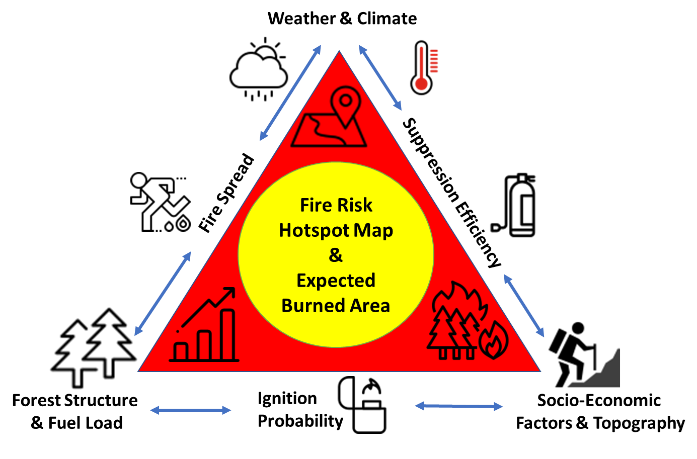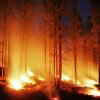
The Austria Fire Futures project will focus on domestic mountain-dominated forest systems and integrate novel insights on local fuel types into forest and forest fire risk models, including new variables such as morphology and recreational activities.
2021 and 2022 have been yet further years in a row of unprecedented wildfire events globally, particularly with respect to their burned area. Unusual large fires occurred among others in Central and Eastern Siberia, Far-East Yakutia, the USA, Canada, Brazil, Australia, and finally also in the Mediterranean regions of Europe and in Austria, the Czech Republic, and Germany. In several of these areas, all-time highs in temperature records were reached, followed by the worst fire seasons in history with dozens of people killed, thousands of destroyed houses and a total burned area of over 100 Mio hectares. This shows that wildfires are – in addition to human-caused land use change and deforestation – the fastest growing threat to ecosystems all over the world.
The Austria Fire Futures project (AFF) thus reacts to the urgent need to develop dynamic fire risk maps based on high-resolution hotspots mapping and implement these for Austria into a broadly accessible platform. The project’s main objective therefore is to develop a unique and innovative new set of fire risk and fire hazard hotspot maps at highest spatial resolution under various climate change scenarios.
The study will improve our understanding of fire-vulnerable forest areas that may shift over time and space given the underlying climate and fuel assumptions. These new fire risk hotspot maps will allow experts, practitioners, and the interested public to take a look into the future in order to comprehend and derive solid short-/medium-/and long-term recommendations for fire resilient and sustainable forest management and fire emergency planning.
 © © Austria Fire Futures
© © Austria Fire Futures
New Austria Fire Futures concept of an integrated fire management with special emphasis on novel socio-economic (e.g. hiking tourism behaviour) and topographic variables which are complemented and ”integrated” with the classical components of a fire triangle.
The projects main objectives are based on the following three hypothesis:
Hypothesis 1: based on a set of new and forward-looking fire risk hot spot maps the forest fire management in Austria can be substantially improved through a site-specific adaptation to fire risk. This improved capacity will eventually result in reduced burned forest area.
Hypothesis 2: better knowing and understanding of the social dimension/the human factor, e.g., hiking tourists’ preferences and behavior when out in the forests, will help to improve short-to medium-term forest fire risk assessment and hence reduce future occurrence of fires and potential danger and harm to the tourists themselves.
Hypothesis 3: transparency with respect to research outcomes, co-design with relevant stakeholders, and improvement of existing tools will add to the value of the information created through Austria Fire Futures and finally help reduce fire risk and burned area by creating awareness among local stakeholders, policy- and decision makers, and the general public including domestic and foreign tourists such as hikers and bikers.
Austria Fire Futures Partners:
University of Natural Resources and Life Sciences (BOKU), Vienna:
- Institute of Silviculture
- Landscape Development, Recreation and Conservation Planning
- Meteorology and Climatology
Bundesforschungszentrum für Wald (BfW)
This project is funded by the Austrian Climate and Energy Fund and is carried out under the "ACRP 14th Call" program.
News

10 May 2023
FLAM Model Presentations Garner Positive Feedback at Prestigious Conferences

13 October 2022

